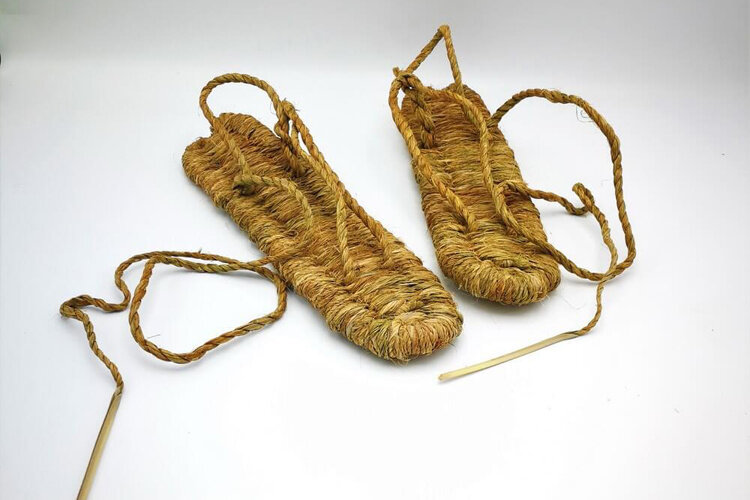Discover Sovas, time-honored footwear of Hormozgan

TEHRAN - Sovas, a type of handcrafted traditional footwear, has long been made in various villages of Hormozgan province, southern Iran.
These lightweight and durable shoes, woven from natural fibers, have been a staple of life in the region’s hot, arid climate for generations. Sovas not only serve a practical purpose but are also a beautiful reflection of the rich cultural heritage and craftsmanship of the local people.
They are made primarily from the leaves of palm trees, which are abundant in Hormozgan. This choice of material makes them highly breathable and perfectly suited for the region's scorching heat. The natural fibers allow for excellent ventilation, keeping feet cool, while also providing protection against the rough terrain and thorny desert plants.
The process of crafting Sovas, however, is labor-intensive, involving the collection, drying, and preparation of palm leaves. Once the weaving is complete, additional straps—sometimes adorned with simple decorations—are attached for comfort and functionality.
One of the unique aspects of Sovas is their durability. In the past, they were essential for long desert walks, allowing wearers to traverse hot, dry landscapes with ease. A single pair of Sovas, moistened before a journey, could keep the feet cool and comfortable over many kilometers.
Sovas come in both men’s and women’s styles, with slight variations in the way straps are attached. While men’s Sovas often feature additional bands for extra support, both versions share the same lightweight, breathable qualities that have made them a favored choice in the region.
Preserving a cultural legacy
Sovas weaving is more than just a craft; it is a skill passed down through generations, representing the history, identity, and survival of the people of Hormozgan. Despite the rise of modern, industrial footwear, this traditional craft still persists in some villages, though it faces the risk of fading away as demand declines and lifestyles change.
Visitors to Hormozgan can experience the beauty of Sovas firsthand, learning about the intricate process of making them and perhaps even taking home a pair as a unique and meaningful souvenir. By supporting this ancient craft, tourists not only contribute to the preservation of an endangered tradition but also take home a piece of Hormozgan’s cultural heritage.
Hormozgan, bordering the Persian Gulf and the Sea of Oman on the south and bounded by the provinces of Bushehr and Fars on the west and northwest, Kerman on the east and northeast, and Sistan-Baluchestan on the southeast, was named after Hormuz, which is one of its historical islands.
Bandar Abbas, the provential capital, was founded by Shah Abbas I the Great in 1622.
AM
